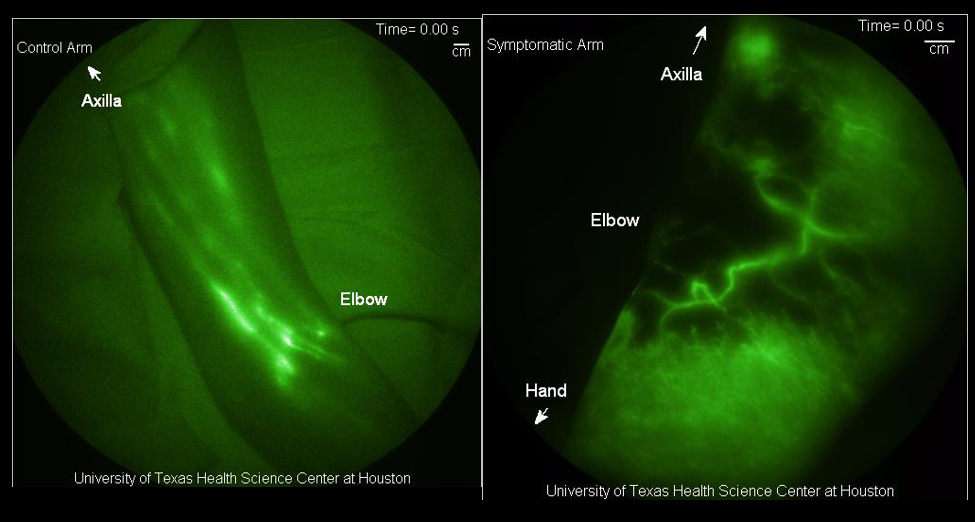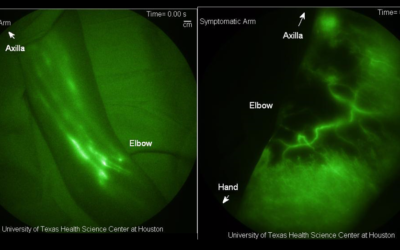Introduction
In 1990, I started a Wound Center at the Memorial Hermann Hospital in the Houston Medical Center while working on the faculty of the University of Texas Health Science Center, Houston. Not long after the doors opened, I began receiving phone calls from breast cancer survivors asking if we provided treatment for lymphedema. We didn’t. In fact, I knew absolutely nothing about lymphedema. However, the frequency of these calls made it clear there was a need so in 1997, a certified lymphedema therapist was added to the staff. There was no marketing or patient outreach by the hospital for this service, so I expected for utilization to be low. However, within two years we were seeing as many patients with lymphedema as with chronic wounds, including children with primary lymphedema. This is a community that networks – because they have to. Because there was very little information available to educate physicians like me, my training was almost entirely “on the job,” provided by the fantastic lymphedema therapists on my staff and by the patients themselves. It gradually dawned on me that nearly all the patients with chronic lower extremity wounds also had lymphedema, but no one in the field of wound care seemed to have noticed this.
The main barrier to understanding lymphatic disease was the absence of a way to image the vessels in real time. Nearly every year, newer and better imaging technology became available for the blood vascular system, but there were no such advancements for lymphatic imaging. Then one day, a PhD at Baylor College of Medicine called me out of the blue. She told me she was developing a way to image the lymphatics in real time, and would I like to collaborate? That was twenty years ago.
Since then, Dr. Eva Sevick and her team have worked tirelessly to develop lymphatic imaging and use it to understand lymphatic anatomy and function. There have been many important discoveries, but in this orphan medical field, there is no “one stop shop” where clinicians, therapists and patients can go to find the most up to date information. Additionally, the published papers are often written in highly technical language for a specific group of experts. Typically, we would rely on textbooks to synthesize a large body of knowledge and make it understandable – but textbooks are expensive to produce, there’s little demand for textbooks about lymphatic disease, and in today’s world, the information in them is often obsolete by the time they are printed.
Although this is an unorthodox solution, I have decided to post a series of articles to summarize more than two decades of work in lymphatic imaging. I will provide links to open source published papers as well as links to the videos of normal and abnormal lymphatic images. All of the papers which serve as the foundation for these posts were peer reviewed, but these posts will have no such vetting. I take personal responsibility for any errors, and will work to improve and update these articles as more information becomes available. I am very grateful for the medical editing assistance of Mary Ellen McEvoy, without whose help this project would not be possible.
These posts are dedicated to the wonderful lymphedema therapists who have patiently educated me over two decades, and to the patients whose courageous suffering has inspired all of us to advance the frontiers of knowledge. I hope we can offer them better treatments soon.
–Caroline
This exciting series will be limited to our registered subscribers only. We will NOT sell your information – and this content is totally FREE – no strings attached. We will email you if there are any exciting new publications in the field of lymphology.
Other Posts in the Series to Date:
The (Mostly) Complete Guide to Lymphatic Anatomy Part 1: Why We Need Lymphatic Imaging and a Synopsis of What We Have Learned From it So Far
Introduction: I have decided to post a series of articles to summarize more than two decades of work in lymphatic imaging.

Dr. Fife is a world renowned wound care physician dedicated to improving patient outcomes through quality driven care. Please visit my blog at CarolineFifeMD.com and my Youtube channel at https://www.youtube.com/c/carolinefifemd/videos
The opinions, comments, and content expressed or implied in my statements are solely my own and do not necessarily reflect the position or views of Intellicure or any of the boards on which I serve.




